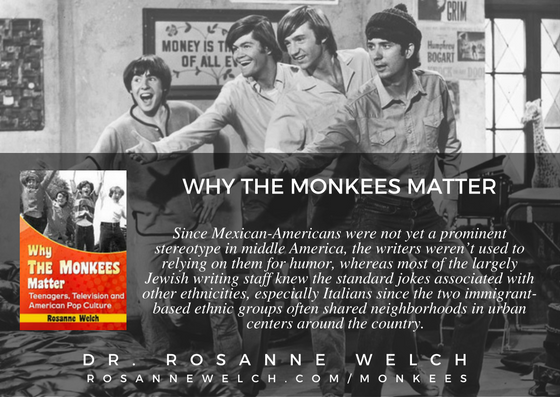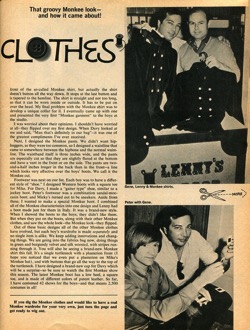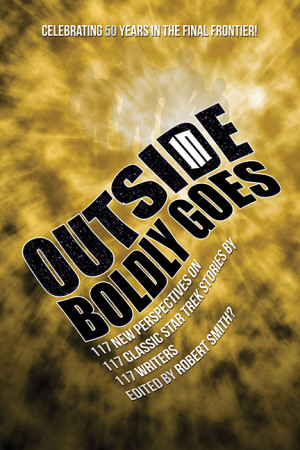I MAKE THE MONKEES CLOTHES BY GENE ASHMAN
ABOUT THE AUTHOR
Gene Ashman was born in Los Angeles. At the age of ten he moved to New York City, where he studied classical piano for Eye years. At 15, he returned to LA, and while studying history at the University of Southern California he became interested in designing costumes. Since then Gene has become one of the most sought after costume designers in the movie and television industry. His credits include The Eddie Bodin Story, The Harder They Fall, Who Was That lady?, Circus Boy (yes. Gene designed the outfit Micky wore on the show), Bewitched and The Monkets. Currently, Gene is designing the costumes for Funny Girl.
WHEN I was designing costumes for Bewitched. Bert Schneider called me in for an interview. One of the first things he asked was, “How do you feel about young people?’ I thought for a minute and then I said. “The kids of today are very interesting and exciting and. clothe…wise arc into something quite different from anything that has ever been done before.” Mr. Schneider seemed pleased with my response and told Mt all about his upcoming TV pilot, The Afonkeer. After describ-ing the wonderful and zany idea to rne, he told me he would make arrangements for me to meet Davy /ones. Micky [Mena. Peter Tork and Mike Nesmith—the four boys whom he and his partner, Bob Rakhon. had chosen to be the Monkees. To tell the truth. when I first met the boys I was shocked by their long hair and uninhibited mannerisms. but as I sat and talked with them I soon saw their separate personalities emerg-ing. Here. in a nutshell. is what I saw then: Davy—young: energetic: fantastic ideas. Afike—a little reticent: serious-minded: artistic. Afkky (whom I had known from CIMIT Boyl—totally inven-tive; no one can know how great he will be—even himself—until he channels his energies. Poser—very sensitive: great humanitarian qualities: excellent singer and guitarist.
FIRST MEETING
My first meeting with the Monkees was at night, after they had spent all day rehearsing for the show. We sat around and discussed their likes and dislikes. We decided that we definitely wanted the Monkee: clothes to reflect their individual taste. style and personalities. We wanted to avoid the Camaby Street look. the “Mod” look, or any other wellsestablished look. Ultis 6 stately. I decided that although all of the Monkees’ clothes would he derived from basically the same design. their afore-mentioned personalities were to emerge through their clothes. All of Mike’s things would have a definite Weller”, flavor. For instance. he would have terrinch tide vents on all his jackets, like the Western gamblers used to wear. Micky’s jackets would be a oncsbutton, doublesbreasted, rolled collar cut—reflecting his casualness. Peter’s jackets would be a very slim. twabutton, double-breasted cut—form-fining with lots of freedom of move-ment. And Day (who was the most style-conscious of all the boys) would have two-button. double-breasted jackets with a slight English flavor.
Now, all I had to do was find a shop to give me the inspiration and basic design patterns that I needed. Firm. I went all over L.A. and. believe me. that’s a great big city. I was shocked to find nothing that was right for the Monkees. I headed for San Francisco. and after several days of searching through the wens’ shops there I came hack to the studio tired and dejected. I don’t believe in Fate. but I really think she way watching over me at this moment. I was almost ready to give up when—on the way to grab a sandwich at the Copper Skillet. a block from the studio-il passed a little more which sold vets’ hip clothing for mien. I looked at the sign. It said: 1.enny’s Boot Parlor.
I thought—hhor o sooner nome for o store—and I wandered inside. The first thing I discovered was that Lennyi was nor just a hoot parlor. It was one of the grooviest men’s stores I’d ever been in. I was fascinated by everything I saw—shirts of endless design and pattern, pants in every fabric and cut imaginable—plus an array of the most beautiful boots ever.
“Hi, a friendly voice greeted me. “I’m Lenny Able. Can I help your
“You sure Can.” I said, and I sat down and told Lenny my story. He. like me, became fascinated by the idea of creating clothes for the Monkem. He could share my enthusiasm. dig-ging the whole idea as the grooviest chalknge ever. “What’s the budget”‘ he asked at one point. “$700.” I said sheepishly, and he looked at me as though I were crazy and didn’t say a word. He just went right on raving about the clothes that could he created for the Monkees. (Usu-ally. “wardrobe” for a TV pilot is scaled at about $2,000. The entire production cost for the Monkees’ pilot was originally scaled at $100.000 and ended up at 5300,000, but 1 exceeded my wardrobe budget by only a few hundred dollars—quite a feat.)
THE MONKEE LOOK The first innovation I came up with was a plasterion; in cos-tuming tern, that means patch. This technique was used on what in now known as the Monkee shin. I didn’t want to design lregular double-breasted shirt, and though the Monkee shins ook as though they’re double-breasted. actually they’re not. As you know, there are two rows of four buttons down the
[…]


![The Frodis Caper from 1960’s TV Censorship and The Monkees [Video] (0:56)](https://rosannewelch.com/wp-content/uploads/2017/01/monkees-censorship-17-frodis-caper.jpeg)

![More On The Vietnam War and The Monkees from 1960’s TV Censorship and The Monkees with Dr. Rosanne Welch [Video] (1:03)](https://rosannewelch.com/wp-content/uploads/2017/01/monkees-censorship-16-vietnam-2.jpeg)










![The Vietnam War and The Monkees from 1960’s TV Censorship and The Monkees with Dr. Rosanne Welch [Video] (0:49)](https://rosannewelch.com/wp-content/uploads/2016/12/monkees-censorship-15-vietnam.jpeg)